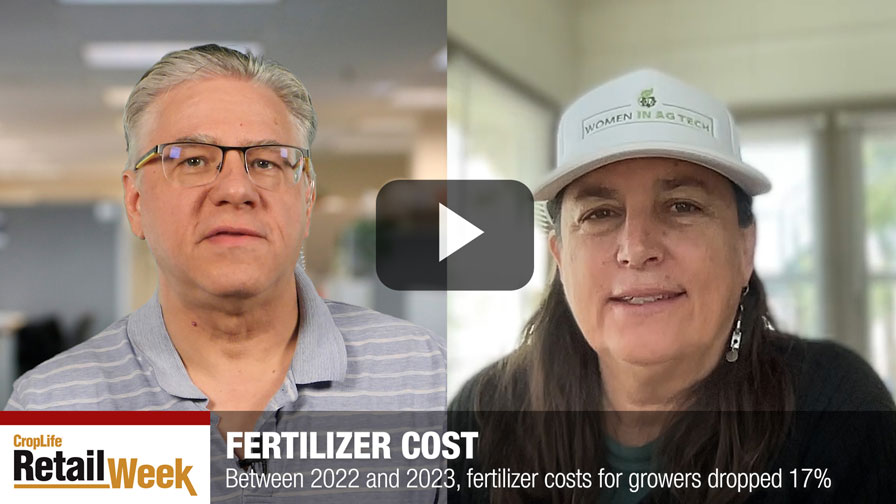Biofuels Grow Up

Just before the corn-based ethanol boom shifted into high gear two years ago, CropLife® magazine offered a brief glimpse of a hopeful industry. With plenty of support from the federal government in the form of subsidies, tax credits, and other promotional efforts via the Energy Independence and Security Act of 2007, biofuels have now become an undeniable part of the country’s energy picture. In 2008, USDA predicts that 33% of the corn crop will be used for ethanol (though one-third of this figure will be used as feed in the form of distillers grains).
But perhaps the key question now: Is the movement sustainable? “People all over the world are looking into ways to make the biofuels industry more sustainable from both economic and environmental perspectives,” says Tim Lindsey, associate director of the Illinois Sustainable Technology Center in Champaign, IL. The industry is addressing the paramount issues of land use, energy consumption, and water consumption.
Toni Nuernberg, executive director of the Ethanol Promotion and Information Council (EPIC), describes the ways production has been improved in just the last few years: water consumption is down 27%, grid/electricity use has gone down by 16% — and “total energy use is down by almost 22%,” she explains. “Some of the anti-ethanol statements have used really old, old data.”
In contrast, research released in early October from the University of Nebraska-Lincoln shows estimates for the energy balance of corn-based ethanol are two to three times more favorable than previously thought. Then too, seed companies continue to improve hybrids for premium traits and maximum yields (some say a 300-bushel-per-acre hybrid is in view), and growers are constantly gaining production efficiencies.
Food-vs.-fuel concerns are still high in consumers’ minds, but research is addressing the issue. For instance, Nuernberg tells of how Lifeline Foods, St. Joseph, MO, is using a corn fractionation technology that breaks each kernel into three parts: one for making food grade products (such as corn grits used by Frito Lay in its snack foods); one for burning as a fuel source; and one for producing ethanol.
And a host of government, university, and private sector studies confirm that ethanol production has played a minor role in higher food prices over the past few seasons. Instead, price hikes can primarily be traced to rising energy and marketing costs. “In fact, we can show what ethanol is saving the average consumer today at the pump over a 12-month period,” says Nuernberg.
“The anti-ethanol campaigns are funded by people with very, very deep pockets. And they can afford to be doing national blitzes,” she says. Even a brief look at news giant CNN’s coverage of ethanol over the past two years shows a noticeable trend in citing ethanol as a factor in many market problems.
Alternative Sources
Fueled by monies from government grants, private investors, oil companies, and the biotech industry, great emphasis is now being placed on developing feedstocks other than corn and soybeans. Alternative crops range from fast-growing perennial grasses such as miscanthus to algae species that produce as much as half their body weight in oil, says Lindsey. Biomass options for conversion may include corncobs, corn stalks, wheat straw, rice straw, switchgrass, vegetable/forestry/landscape waste, food processing waste, garbage, by-products from processing paper and wood, and other organic matter. “Soon biofuels will be produced out of everything from manure to sawdust,” he adds.
The vast amounts of cellulose in crops and waste products are the secret, but processes for converting that cellulose to ethanol are still being developed. In the past, scientists used steam and aggressive acids to break the cellulose down into more simple sugars; however, newer methods use enzymes and microorganisms as the vehicles.
Nuernberg estimates large-scale cellulosic ethanol production is three to five years away, but some biofuel developers are indeed reaching pilot production. This year, Poet LLC will complete a $4 million cellulosic facility next to its corn ethanol plant in Scotland, SD — with plans to build a commercial-scale plant in Emmetsburg, IA, in 2009. The company’s process utilizes corncobs and corn fibers.
Future In Flux
As emphasis shifts from corn and soybeans to other feedstock options, will established plants — as well as growers — be left out in the cold? Nuernberg believes that if the goal is true energy independence, “it’s going to take quite a bit of ethanol to do that, and with all sources combined, there’s room for everybody,” she says. Lindsey adds that plants that have developed long-term contracts with feedstock suppliers will continue to do well.
“Also, facilities that are able to process diverse feedstocks will be less susceptible to market fluctuations associated with single feedstocks such as corn and soybeans,” he says. Because many current corn-based plants have been built on large (i.e., 20-acre) sites, they have the room to add facilities to pre-treat cellulose, breaking it down into simple sugars, then feed it into their existing plants.
Much is riding on the new administration elected this month. At presstime, the election was days away, but both candidates had addressed the biofuel issue. Lindsey summarized their positions: Sen. McCain has said he wants to repeal the Renewable Fuels Standard (RFS) and eliminate subsidies for domestic ethanol production and tariffs on imported product from countries such as Brazil so a free market can fix the energy crisis. Sen. Obama favors the RFS along with current subsidies and tariffs on ethanol as a means to shift the U.S. toward renewable fuels. Nuernberg notes that Obama has called corn-based ethanol a “transitional” fuel. “It’s important to note that corn-based ethanol will always have a role in America’s energy policy no matter who is elected into office,” she says.
Lindsey emphasizes technologies in the works will be much better, much more sustainable “if we take the time to see these things through and not get the carpet yanked out from underneath us,” he says. Lindsey harkens back to his days at Exxon in the early to mid 1980s when synthetic fuels were being developed from coal and oil shale. Then oil dropped from $30 to $40 per barrel to $12 to $14. Full-scale production facilities — some completed, some partially constructed — were shelved when oil prices fell so dramatically and ruined the economics of the projects.
Nuernberg points out that the federal government funded more than $130 billion dollars in subsidies to the oil industry between 1968 and 2000, figures that come from a General Accounting Office study. “And that doesn’t include the estimated $44 billion per year spent by the Department of Defense to protect all of the oil supplies.”
EPIC is ready. “We have no doubt that in early 2009 the energy issue will be debated in Congress, and we have to be prepared for that,” says Nuernberg.





